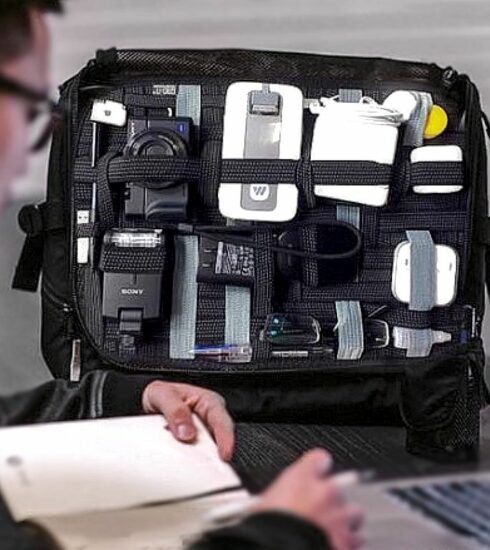Surveillance Detection Route (SDR)
The surveillance detection route concept is a personnel movement and navigational system of strategy to detect, counter and avoid surveillance.
Surveillance detection route (SDR) is an intelligence-gathering technique used by government agencies and security personnel to identify people who may be conducting surveillance on a particular location or person.
This technique involves the use of multiple routes and/or variations in transit along a particular route in order to detect any potential surveillance. By understanding the fundamentals of SDR, CIA agents, spies, military personnel, and other security personnel can become better equipped to protect themselves from surveillance activities.
What is a Surveillance Detection Route?
A surveillance detection route is a method used to detect potential surveillance activities. It involves varying one’s travel pattern along a pre-planned route that has been designed to maximize the chances of detecting any suspicious activity or persons. SDRs involve driving or walking through an area at different times of day, using different vehicles or modes of transport, taking different routes and making random stops along the way. The goal is for the individual traveling through the area to observe any individuals who may be following them or paying too much attention to their movements.
How Does Surveillance Detection Route Work?
Surveillance detection routes are designed with certain key elements in mind. These include taking multiple routes on a given journey; varying one’s speed; stopping at random locations; changing vehicles during transit; reversing direction unexpectedly; making sudden turns or lane changes while driving; and changing clothing while in transit if possible. All these tactics are employed in order to make it difficult for someone conducting surveillance on you to keep track of your movements. Additionally, SDRs involve looking out for signs such as unfamiliar cars parked near one’s destination or individuals following behind you who seem out of place.
Who Can Benefit From Surveillance Detection Routes?
Surveillance detection routes can be beneficial for anyone involved in intelligence gathering activities such as spies, CIA agents, counterintelligence officers, Special Forces personnel, and private security personnel. By being aware of their surroundings and utilizing SDRs when necessary, these individuals are better able to protect themselves from potential threats posed by active surveillance activities conducted against them by hostile forces or foreign governments. Additionally, private citizens can benefit from understanding how SDR works in order to potentially avoid becoming victims of fraud or theft involving people following them after they withdraw money from ATMs or banks.
Surveillance detection route analysis is an important tool for those involved in intelligence gathering activities such as CIA agents, spies, Special Forces personnel and counterintelligence officers who need to know what kind of threat they might face when conducting operations abroad or domestically. It also serves as an effective tool for private citizens who need protection from criminals who might be planning thefts based on their observations about where they go each day and how often they visit certain places like banks and ATMs. Understanding the basics of SDR will help everyone stay safe regardless of their role within society.

How to Use SDR
Operatives must use surveillance detection routes when in the field for most types of movements such as meeting with an asset or handler.
Multiple routes, meeting points and timetables should be per-arranged but used dynamically and randomly – as to defeat, bypass or counter potential fixed surveillance from the opposition.
A well-designed and executed SDR gets the operative to the destination on time, clean and without alerting potential watchers – while giving the operative chances to observe the observers.
It should include a number of moves that allows the operative to look back – all of which must be smooth and appear natural to all observers.
SDR should parallel, crossing and enveloping direct routes, always tending toward the meeting site.
Turns at natural corners gives the operative a chance to look back and see who is behind. More importantly, a turn forces followers to react to those seemingly sudden movements.
Stairstepping is a more sophisticated (and provocative) version of the simple turn.
It means making a series of left and right turns, usually chosen in a grid pattern of streets.
As a rule of thumb, it’s assumed that anyone who is still behind you after 3 or 4 turns in a stairstep pattern is following you.
Because it is provocative, a stairstep pattern MUST be followed immediately by a logical stop.
A channel is a section of the route chosen to force surveillance to follow directly behind, giving the operative a powerful detection opportunity. Such as bridges, alleys, tunnels, isolated roads etc.
If the operative is a target of a multiple persons team, an effective channel will force all or most of the team to get behind you in a line. This is called a wagon train.
A reversal is basically a u-turn that allows you to look back naturally, and that forces surveillance to react to or mirror your movement. Reversals are highly provocative and, again, must be followed by a stop that explains the reversal; stopping (store or gas station) on the opposite side of a divided street.
Go past the stop to the next crossover, make the u-turn, do the stop, then make another crossover to get back onto your route.
This whole operation (actually a double reversal) will force surveillance to either stop on the original route, replace a follower with another, or mirror your movements.
There is only one SDR technique that works to detect a well-operated hostile “bubble”: You must move, swiftly and decisively, at 90 degrees to your general direction of travel, for at least 4 blocks, and immediately resume travel along the original direction.
This “breaks” the bubble and forces it to re-deploy around you. It must include a cover stop soon after resuming directional movement.
[OPTICS : Amsterdam, Netherlands]







